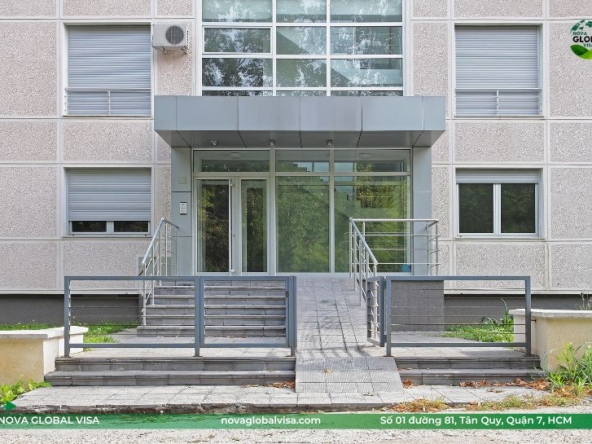When investors seek a home loan in Australia, they will invariably encounter the term LVR, or Loan to Value Ratio. Calculating the LVR is of paramount importance when formulating your Australian real estate investment strategy, as it aids in identifying the most advantageous home loan options.
LVR Calculation
The Loan to Value Ratio (LVR) is determined using the following formula:
LVR = (Asset Purchase Price – Deposit Amount) / Asset Purchase Price
Where LVR is represented as a percentage. For instance, an LVR of 80% implies a 20% deposit has been made, signifying that the borrowing amount is 80%.
LVR is a standard concept within the mortgage industry. Each home loan lender establishes a maximum LVR, stipulating the minimum deposit required for borrowers.
Illustrative LVR Example
Consider the scenario where you acquire a property valued at AUD 700,000, with a deposit of AUD 140,000.
Therefore, LVR = (700,000 – 140,000) / 700,000 = 80%.
Additional Examples
Here are some further examples:
|
Asset value (AUD)
|
Loan amount (AUD)
|
Deposit (AUD)
|
LVR (%)
|
|---|---|---|---|
|
500,000
|
400,000
|
100,000 (20%)
|
80%
|
|
500,000
|
425,000
|
75,000 (15%)
|
85%
|
|
700,000
|
490,000
|
210,000 (30%)
|
70%
|
|
700,000
|
630,000
|
70,000 (10%)
|
90%
|
|
900,000
|
810,000
|
90,000 (10%)
|
90%
|
Exploring LVR Variations and Their Significance
LVR, or Loan to Value Ratio, comes in two distinct flavors, each serving a unique purpose and offering opportunities for investors. Let’s delve into these aspects:
Covered LVR
When a borrower’s LVR exceeds 80%, they become liable for “Mortgage Insurance,” also known as Lenders Mortgage Insurance (LMI).
LMI is a form of insurance that safeguards the lender in mortgage agreements. It’s a common practice in various countries, including the USA, Australia, and Canada (with varying conditions). Its primary function is to protect the lender against financial losses should the borrower default on the loan, and the lender is unable to recover expenses following property foreclosure and sale.
It’s worth noting that although the borrower pays the premium, LMI exclusively shields the lender, not the borrower. LMI can be a substantial cost, but it allows for maximum insured LVRs of 90% or even 95%. This means borrowers can secure loans with smaller initial deposits. Savvy investors can capitalize on LVR with insurance to support their investment strategies, hence the existence of two LVR types.
Maximum LVR
Maximum LVR signifies the minimum deposit required for investors to borrow without the obligation to pay mortgage insurance to the lender. In Australia, the maximum LVR for most loans is typically set at 80%, sometimes even lower.
Illustrating the Two LVR Types
To grasp the difference between these LVR types, consider two examples:
Home Loan A: Offers a maximum LVR of 80% and a maximum insured LVR of 80%. To obtain this loan, a 20% deposit is needed, and LMI cannot be used to secure the loan with a lower deposit.
Home Loan B: Provides a maximum LVR of 80% but allows a maximum insured LVR of 90%. In this scenario, investors can choose between:
- A 20% deposit with no LMI required, or
- Borrowing with a deposit ranging from 19% to 10% of the property’s value and paying LMI.
LVR for Refinancing
LVR is also significant when refinancing, but the approach differs. Instead of computing the deposit amount, investors must evaluate the asset’s value. The refinancing LVR formula looks like this:
- LVR (Refinance) = (Current Asset Value – Outstanding Loan Amount) / Current Asset Value x 100
For accurate values:
- Current Asset Value: Estimate the property’s current market value by examining recent sales of similar properties in the vicinity. Property valuation tools on real estate websites or professional valuations can help.
- Outstanding Loan Amount: Access the remaining loan balance by checking the lender’s online platform or application.
For instance, if your house is valued at $800,000 and you owe $300,000 on your home loan:
LVR (Refinance) = (800,000 – 300,000) / 800,000 x 100 = 62.5%.
An LVR of 50% typically qualifies you for most home loans, as many have a maximum LVR of 80%. Demonstrating a solid income and the ability to manage debt repayment is essential for refinancing success, and with a robust LVR, approval chances are significantly enhanced.
Is It Possible to Secure a 95% or 100% LVR Home Loan?
Absolutely. While less common than loans with maximum insured LVRs of 80% to 90%, loans with a 95% LVR are available. These loans require only a 5% deposit, making entry into the Australian property market more accessible for those with limited savings. To illustrate, here’s a comparison showcasing the difference a 5% deposit makes.
| Asset value | Deposit 5% | Deposit 20% |
|---|---|---|
|
$500,000
|
$25,000
|
$100,000
|
|
$700,000
|
$35,000
|
$140,000
|
|
$900,000
|
$45,000
|
$180,000
|
Unlocking the 100% LVR with a Home Loan Guarantor
In days gone by, prior to the global financial crisis of 2008, some lenders extended home loans covering the entire property’s value. While this practice has become rare today, there remains one exception: home loans with the backing of a guarantor.
Certain lenders are willing to lend over 95% of the property’s value if the borrower’s parents own the property and are willing to step in as guarantors. Essentially, the parents agree to shoulder responsibility for a portion or the entirety of the loan if the borrower encounters difficulties in repaying it.
This option carries inherent risks. In the worst-case scenario, if the borrower defaults on the loan, the parents may need to sell the house to settle the outstanding debt. However, with a thorough understanding of the risks and access to independent financial advice, this arrangement can proceed smoothly. Additionally, using a guarantor allows borrowers to sidestep the need for Lenders Mortgage Insurance (LMI). Here’s an illustrative example to highlight the advantages of having a guarantor:
- The borrower has a 5% deposit.
- The borrower’s parents provide an additional 15% of the deposit, resulting in a total Loan to Value Ratio (LVR) of 20%, thus eliminating the need for LMI.
- Over time, the borrower can repay the loan using the guaranteed amount from their parents. Even if the borrower faces difficulties in covering the remaining loan, the guarantor remains unaffected.
First Home Loan Program
First-time homebuyers who meet specific eligibility criteria can also secure a home loan with a 5% deposit (LVR= 95%) through the Federal Government’s First Home Loan Deposit Scheme.
This initiative enables eligible buyers to borrow up to 95% of the property’s value. A key advantage is the exemption from LMI, as the government serves as the guarantor for the loan.





